Some techniques & tip’s for fishing the booby but 1st of all let’s get the bad bit of fishing the Booby out the way this fly can be deadly and saying that some fisheries have banned it as the fish can be deep hooked (all mine are barbless) so please check before using them as I don’t want you banned as well as the fly.
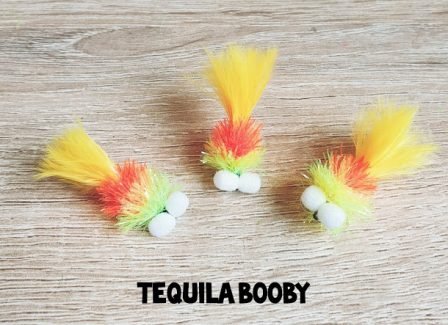
Ok so here we go but please bear this in mind this is not just my opinion on fishing the Booby I have scoured the internet for as much info on Booby fishing to help you guy’s out as much as possible
1. Fish several boobies to cover the depths when fishing a floating line with flies on the droppers, your point fly will go deepest and you’ll be able to fish in the upper layers with your dropper flies, effectively covering trout feeding at two or three different depths. Fishing boobies is effectively the same, just upside down. The point fly will fish closest to the surface and the dropper (or droppers) will fish the lower levels. If you use several flies, you’ll cover different water depths and increase your chances of finding feeding trout. Using more than one fly lets you cover different depths.
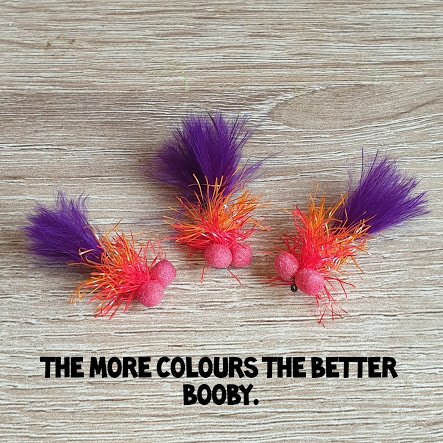
2. Space your flies outFishing one or two boobies is the norm, but you might want to fish them alongside other non-buoyant flies, like blobs, crunchers or Diawl bachs. Whatever you choose, make sure they’re well spaced out, especially if they are brightly coloured. About six feet would be the minimum, but 8-10′ is better if you’re using two more colourful booby fly patterns as fish might get spooked if they’re close together, particularly if you retrieve quickly. Space out colourful fly patterns widely to avoid spooking fish.
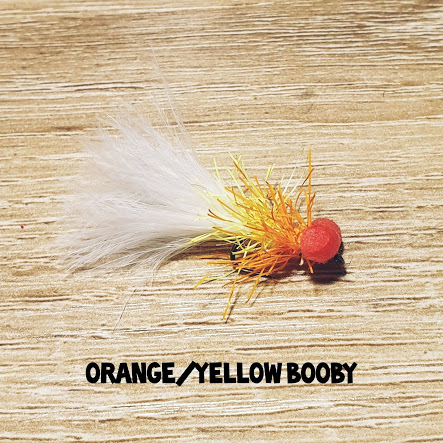
3. Understand how retrieve speed affects movement once the fly line has sunken below the depths of the boobies, the faster you pull, the deeper the flies will dive. A slow retrieve will see the boobies gently make their way towards the depth of the line, while a mixed retrieve can make them move up and down within the water column. Try a variety of retrieves, from a slow figure of eight to a roly-poly, until you find what works on the day. Different retrieve speeds can make boobies descend slowly or dive and rise.
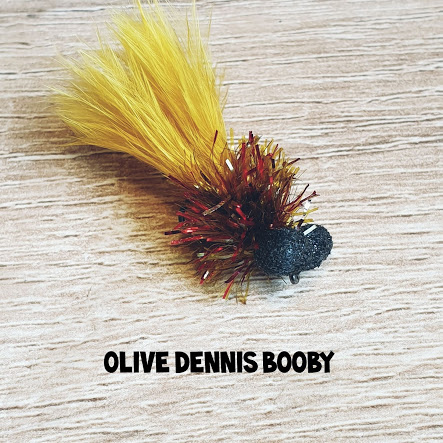
4. Give your tip a flick when fishing boobies on a sinking line, it can help to impart a bit of extra action into them to entice any following fish to take. A great way to do this is to give the tip of your rod a short upward flick to make the submerged fly jump forwards. The line will sometimes lock up straight after.

5. Feel for bites with your fingers as they’re often fished on a sinking line, during your retrieve you’ll be able to feel the additional weight of the sunken line. This can really help bite indication because, as well as plucks, taps and little pulls that go downwards or away from you, the line can also suddenly feel lighter. This is a sign that a fish has taken your booby and swum towards you lifting up the sunken line.
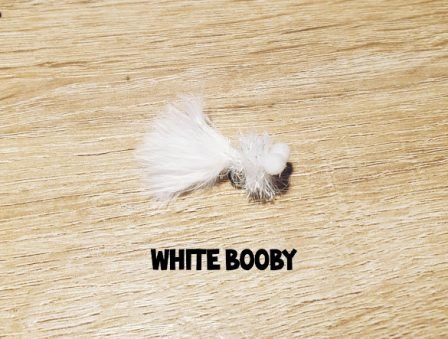
6. Use your fly line as a swing tippy lifting the tip of your fly line about a foot above the water and tilting your rod slightly to the side, you can use the dangling section of fly line as an indicator which works like a coarse fishing swing tip. If a fish takes the fly and moves either away from you or towards you, you’ll see the fly line move and you can strike to set the hook. If the line dangling below the tip moves, a fish has taken your fly.
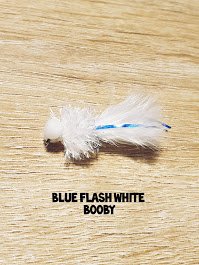
7. Roll your flies up when they near the surface when fishing a sinking line from a boat you’ll need to lift the sunken part of the line out of the water with a roll cast pickup in order to make your next cast. This is particularly important with boobies as they are bulky and harder to pull free of the water. After you’ve hung the flies and are sure there are no fish beneath, roll cast them back out until they hit the surface and then re-cast. Picture copyright © Fly and Lure.
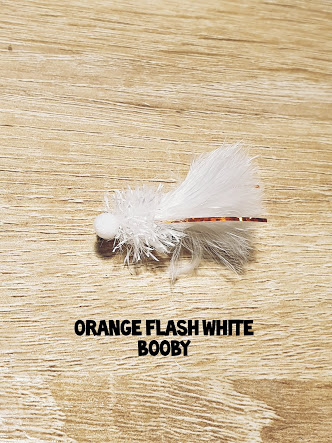
8. Fish deep if it’s cold in the winter and very early in the season before the reservoirs have warmed up, the trout often lie much deeper in the water column, closer to the bed of the lake where nymphs and other aquatic invertebrates are most abundant. To reach these overwintering fish you’ll benefit from a faster sinking fly line, like a Di7 (which sinks at seven inches per second) or a Di8 such as Airflo’s heavyweight Booby Basher line. When it’s cold, the fish are usually lying deeper so use a faster sinking line and a shorter leader to reach them.
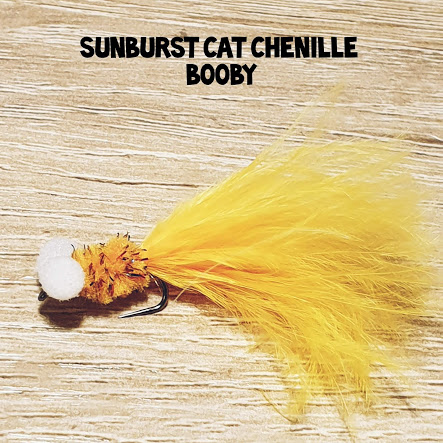
9. Use leader length to control your fliesIf you want to get your flies down deeper you’ll need to reduce your leader length or the position of your first booby if you’re fishing one on a dropper. Given that we all try to fish the longest manageable leader when using other fly lines, it can be a really weird concept to use a shorter one. However, some of the best results can come close to the lake bed so be prepared to fish a leader of 2-4′ if you really want to get down deep. Some anglers will go even shorter than two feet! Similarly, if you want to fish them subsurface, then extend your leader. Changing leader length is key.

10. Cast far and let your line sinkCasting a good distance will be a big help when fishing boobies on a sinking line. You want your flies to sink deep enough to find the feeding fish before your boat has drifted over them. Lines for fishing boobies are, therefore, often designed with distance in mind and usually have a shooting head profile to help you chuck them further. While they sometimes require faster, more powerful rods, especially with lines like the Airflo Booby Basher, they will go further and give your flies longer in the feeding zone.
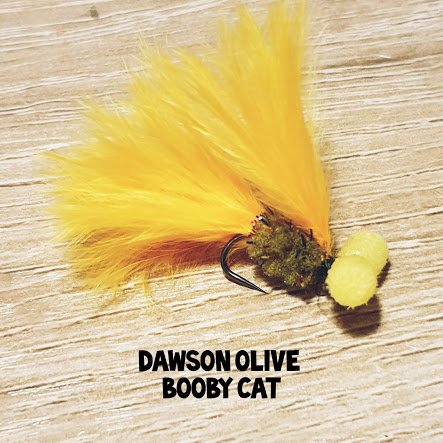
11. Use the countdown method to cover the death whether fishing from the boat or the bank, you’ll want to use the countdown method to cover the depths. On your first cast, try counting down to, say, 15. On the next cast, try 20, then 25 and keep increasing the count until you find the fish or the bottom. In colder weather, the fish will often be cruising near the substrate so finding the right depth will help you locate the fish. Count your flies down to depth after casting.
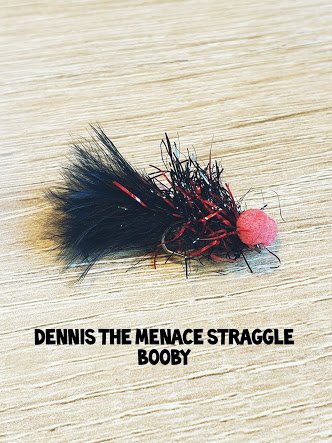
12. Try changing depth during the day trout will move up and down within the water column and change their cruising and feeding depth during the day, depending on what the wind, sun or invertebrate life is doing. Early in the morning they tend to be down deeper, but will often come up as the day goes on. Fishing a lower density or slower sinking fly line or lengthening the leader can help you reach them. If the fish stop biting, change your depth.
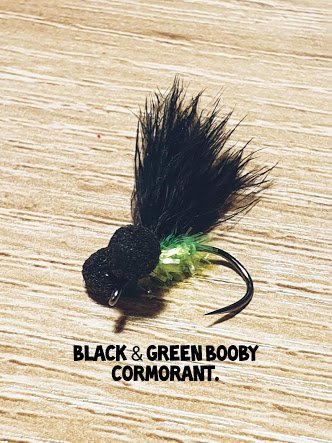
13. Strike sideways to set the hook setting the hook when fishing boobies can take a bit of practice. Sometimes you’ll just feel the line pull-down and feel heavy as the fish takes the fly, at other times it may lighten as the fish takes the fly and swims up, but you’ll generally just feel small taps and plucks. Most experts reckon that striking sideways, rather than up, is the best way to set the hook when fishing on a sunken line, so try that and see if you connect with more fish. Striking sideways can help set the hooks better.
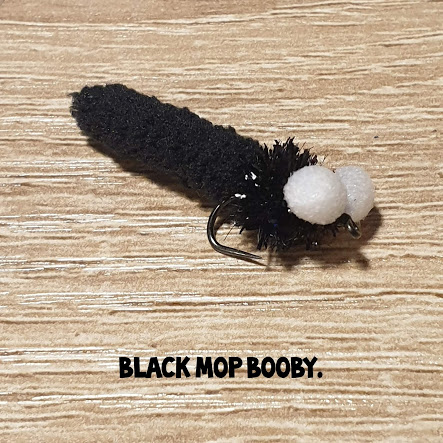
14. Plop the flies when they landEven if you’re fishing a sinking line, giving boobies a plop after they’ve landed can help attract any nearby fish. After you’ve made the cast, give the line a quick tug to cause some surface disturbance and then let them sink. They’ll often be taken on the top or as they start to fall on the drop. Similarly, when you’ve counted them down, a good pull to start off the retrieve can often induce a take. Give the flies a tug.
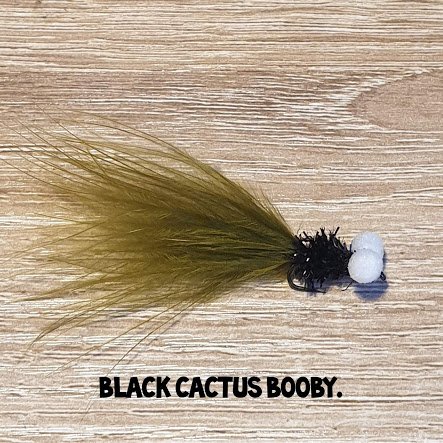
15. Try more natural-looking patterns while most boobies tend to be based on popular Stillwater fly patterns such as blobs and cat’s whiskers, they do not always need to be brightly coloured lure patterns to work well. Some of the most effective patterns can take a more natural appearance. Cruncher boobies and those which are more nymph-like in appearance are also well worth trying too.

That’s a really helpful set of tips. Thanks, I’m off to try them all!
Please let me know how you get on hopeful successfully lol
good advice on fly fishing the booby although i caught a five pound plus rainbow trout on a orange fritz booby on a fast sink line with a two foot leader as soon as the booby hit the surface. but fishing the booby on the bottom of a fishery is deadly with an occasional twitch and raising of the rod tip
fishing the booby fly is deadly on fast sink line with a two feet leader and occasional twitch of the bottom any time of year